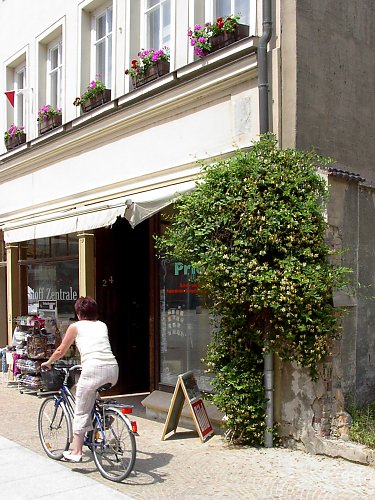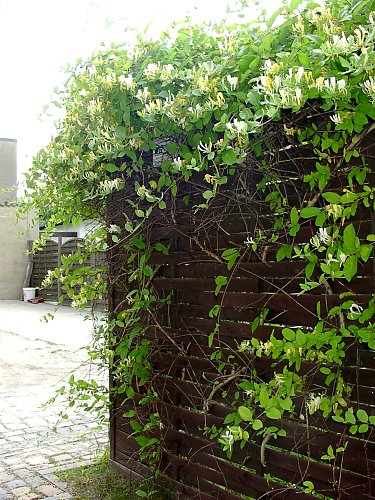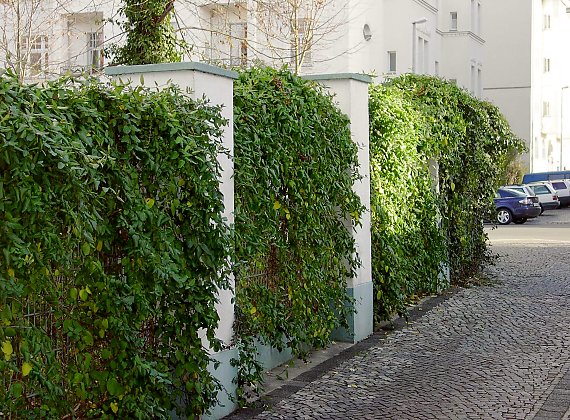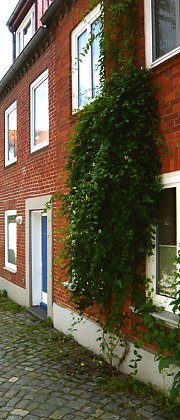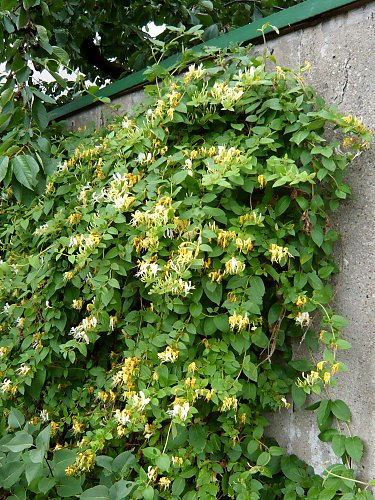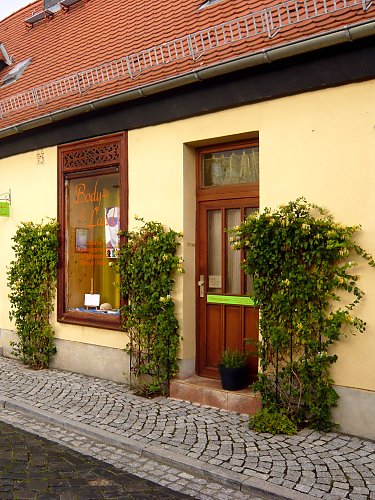Japanese Honeysuckle
The Japanese honeysuckle is an old, robust garden plant with several varieties, like the 'Halls Prolific' (Flowering, growth up to 4 metres high). The variety 'Halliana' (Dr. George Hall / USA, 1862: Vigorous growth up to 8 m high) is probably the original species. Long flowering from June to September (October), strong fragrance, often wintergreen.
>>> Price 'Halliana' / Price 'Halls Prolific'
Japanese Honeysuckle, lat.: Lonicera japonica
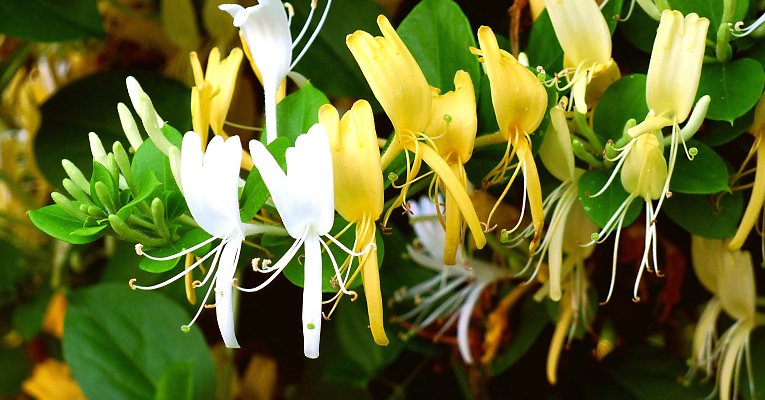
To Thrive...
Warmth-loving plant that thrives in sun or half-shade. For loose, nutrient-rich and slightly damp soils. Distance between plants: 2 - 3 metres.
Characteristics and Pruning
This twining vine from Asia has a long history in Japan. It was introduced to Europe in 1806. Moderately vigorous growth, can reach a height of 6 metres, with cascading/overhanging shoots. Foliage lasts from April to winter and can even be persistent in milder winters; not susceptible to mildew. Early bud burst, flowers are white or yellow with an intense sweet scent and last from June to September, and their scent is especially strong in the evening and morning. Flowers come out two by two from the axil of the leaves. The black berries are inedible but make the birds happy in autumn. To avoid lower balding, some shoots need to be cut back right down to the trunk at the end of winter before the shoots develop, at least on some branches. Summer pruning of the green wood stimulates branching.
Wire rope trellises for Japanese Honeysuckle
Please click on the graphic illustrations for details!
| = suitable | = of limited suitability | = unsuitable |



